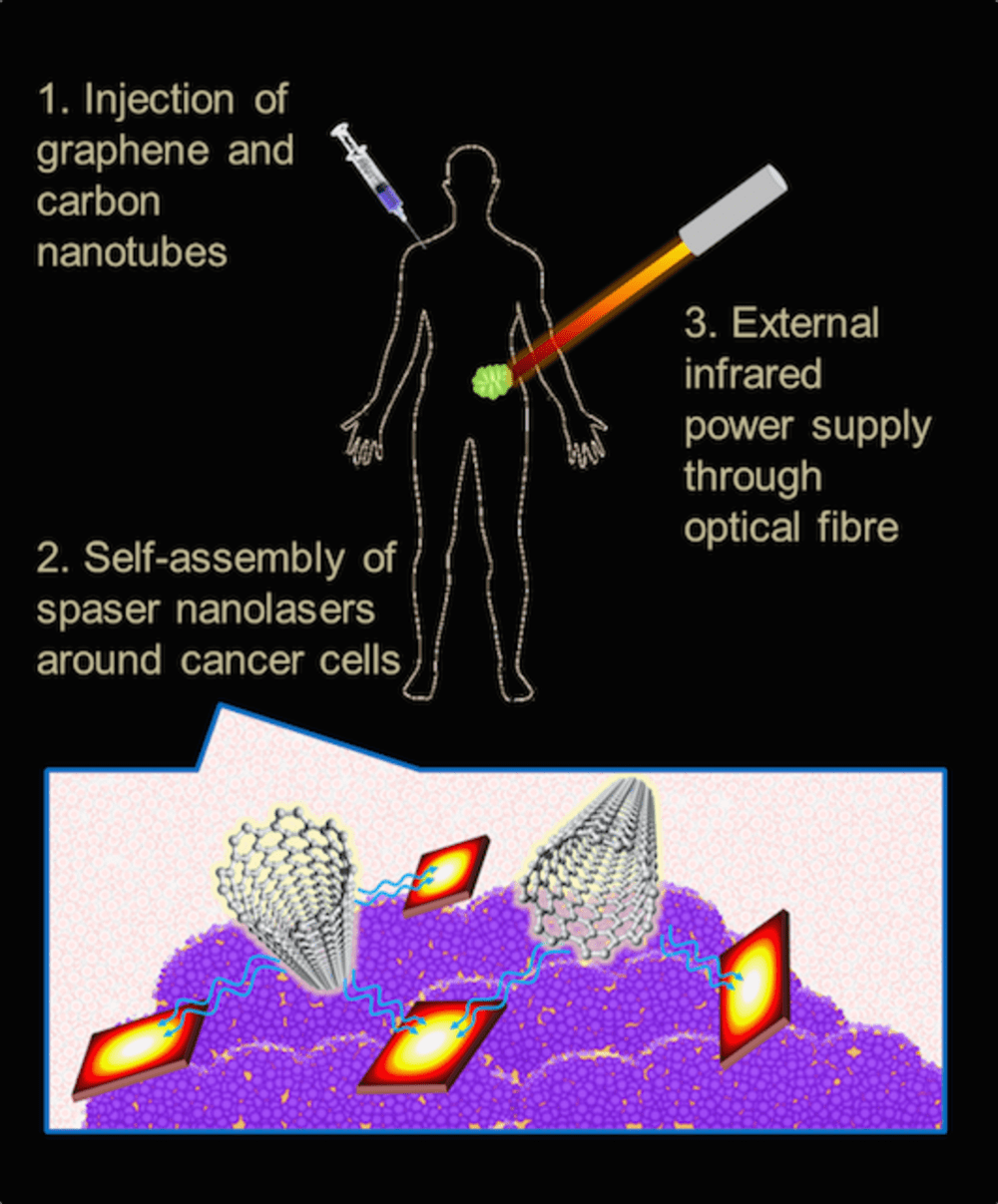Encircling tumors with an army of miniature nanolasers offer a new way to battle cancer. One nanolaser would be at least 100 times smaller than a single cancer cell and millions of them will penetrate a tumor to destroy it by thermal ablation in this new method of treatment. Technically, the proposed device isn’t really a laser, but a spaser, with surface plasmons undergoing amplification rather than light.
In the proposed cancer therapy, a cluster of spaser nanolasers made of graphene nanoflakes (GNF) and carbon nanotubes (CNTs) is self-assembled and operates close to cancer cells concentrating optical energy in large scale. In addition to the burning effect, the same CNTs can also be used to deliver drugs to cancer cells making it a dual approach cell destruction.
It is possible to functionalize GNFs and CNTs with targeting agents such as antibodies or receptor ligands to guide them towards cancer cells. As the first step of the research, functionalized nanoparticles will be injected into the body and 'Enhanced Permeability and Retention' effect also helps to guide them to cancer cells. Hence, only the cancer cells will be burnt and healthy cells will be saved.
Our approach is to let the injected CNTs and GNFs to self-assemble near cancer cells so that they can interact optically. In this configuration both the nanoparticle types are optically excited and CNTs can transfer energy nonradiatively to GNFs, exciting strong localized electric field. This massive field buid-up can generate enough heat to thermally ablate malignant cells. Optical excitement of nanoparticle is done using an IR laser rays delivered close to tumor site using optical fiber. Here we exploit the CNT and GNF excitation energies residing within NIR windows where electromagnetic waves exhibit a relatively low attenuation through biological tissues.
Due to use of two excitement by two external lasers and application the power of stimulated emission of surface plasmons (active field amplification), proposed therapy can perform much efficiently than conventional photothermal therapy, that just passively excites some nanoparticles around cancer cells. Therefore, it has the potential to become a cancer treatment technology that destroy malignant cells faster than many other method proposed to date.
Like this entry?
-
About the Entrant
- Name:Chanaka Rupasinghe
- Type of entry:individual
- Software used for this entry:Comsol Multiphysics
- Patent status:pending

